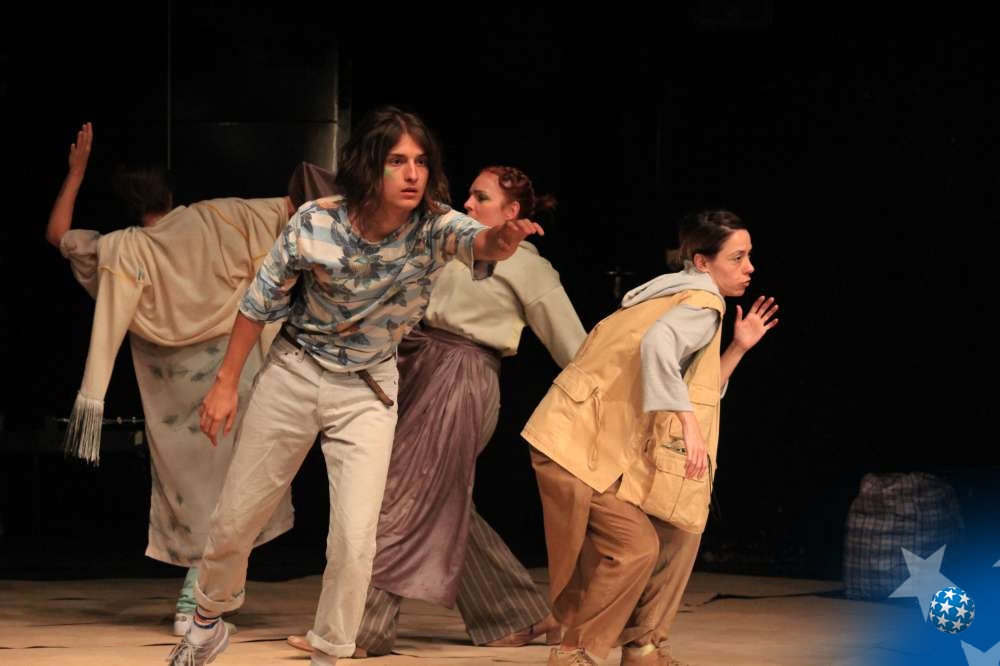Dear Damjan, among all your obligations, we finally managed to find some time for this interview. Since you have already participated at Bitef, I can cut right to the chase: what does Bitef mean to you, and what the participation of your performance at Bitef Polyphony? How important is Bitef Polyphony to you?
- For me, Bitef has been the most relevant theatre compass for a very long time, and it is always a big deal to be a part of it one way (as a participant/author), or another (as its audience).
How important is the role of Bitef Polyphony in the development of scene for young people?
- After so many years since its inception, a lot of things happened at Bitef Polyphony that I find it very hard to perceive it in its entirety, because I always fear I might forget something. One thing that is certain, though, is that it represents a very important theatre compass for all the artists who create for and with young people. It provides a kind of annual (sometimes biannual) insight into the forms and contents of work with the young in pedagogical, social, artistic, educational, and psychological sense, which I think is very important for us who create theatre for children and young people.
What was your motivation to do the performance A Boy with a Suitcase? This time, you are in a somewhat different role, as a director, so tell us something about the process. How important was this topic to you and how did you choose the approach?
- That decision was based on several motives. The play is very well and skilfully written, the theme is more than topical, and I thought it was very important for the young audience to hear and get acquainted with everyday struggles of a young migrant. I thought it was important for the young to realize that no one has chosen to become a refugee, that it is something that can happen to anyone, as it happened to me and to many of us during the nineties. That is why the performance begins with all the actors presenting themselves as Naz, the main protagonist, and ends in naming everyone who could find themselves in his role.
How did you choose the actors, especially the young protagonist Mladen Lero?
- I chose actresses easily, since all of them are “fearless beasts” in acting, plus my friends in real life. It was a bit more difficult to choose actors. I wanted the performance to bring some new, young energy and then, in agreement with Aleksandar Nikolić, I organized an audition, with an idea to choose two actors. Eight actors came and all of them were very good, but Mladen was by far the best. So, we chose Mladen, and then needed the other one. My idea was to have his boyish energy on stage but that the other actor should bring a more strictly speaking manly force. Jelena Ćuruvija and Aleksandar Nikolić gave me an idea to invite Nedim Nezirović to the audition the next day, since he had already played in “Radović” but I thought that he did not have what I needed. After five minutes, Nedim showed me that one cannot be judged by only one role. In this performance, both of them exceeded my expectations. I feel privileged to have had a chance to work with such talented and imaginative young people.
Tell us something about the rehearsals and your methodology.
- The rehearsals were fun, and we didn’t encounter any serious troubles. The process started with workshops in which I wanted to create a collective energy, and then we started searching for possible solutions for particular scenes. Alongside the workshop, I gave them the context, the framework within which to act, we watched music clips, documentaries, performances, which gave them a good idea of what we are striving for. Only then did we return to the text and started creating the performance.
We are all on the edge… how do you understand this year’s Bitef slogan Edge of the Future?
- To be honest, I don’t see the edge as an abyss but as a start, as something that is teaching us how to take a step into the future.

